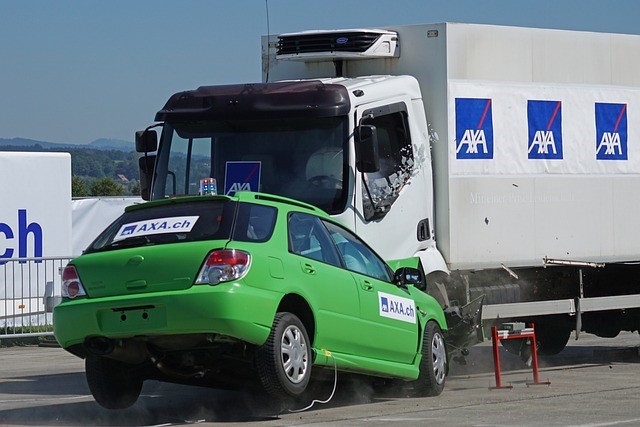Understanding the Root Causes of Trucking Collisions
A Complete Guide to Increasing Driver Safety
This article may contain affiliate links.
Trucking collisions are a significant roadway concern, leading to tragic accidents, property damage and loss of life. These incidents often result from a combination of factors. Understanding their root causes is crucial to improving safety in the trucking industry. Trucking collisions are rarely the result of a single element. Instead, they often involve a complex interplay of various causes. Understanding these common causes is essential for developing strategies to prevent collisions effectively. This comprehensive guide explores the factors contributing to trucking collisions, their impact on road safety, and the measures that can be taken to avoid them.
Speeding
Pressure to meet delivery deadlines or reckless behavior can lead to speeding by truck drivers. Speeding reduces a driver’s ability to react to sudden changes in traffic, increases stopping distances and makes collisions more severe. In this case, encourage adherence to speed limits, install speed-limiting devices, and foster a safe driving culture within your company. After all, in truck accident settlements, if it is proven that the truck driver was speeding or driving at an unsafe speed at the time of the collision, it can significantly impact the outcome of legal proceedings and liability determinations. Ultimately, prioritizing safe driving practices and adhering to speed limits enhances road safety and plays a pivotal role in preventing trucking collisions and their potential legal ramifications.
Driver Fatigue
Long hours on the road, tight delivery schedules and inadequate rest periods can lead to driver fatigue, impairing a trucker’s alertness and reaction times. Fatigue-related collisions are hazardous, as drowsy drivers may fail to brake or swerve in time to avoid an accident. Implementing strict hours-of-service regulations, promoting proper rest breaks and providing driver education on the dangers of fatigue are vital preventive measures. Also, fostering a company culture that prioritizes driver well-being and discourages excessive workload expectations can reduce driver fatigue and its associated risks. Recognizing the signs of fatigue and encouraging drivers to report when they feel tired can also help proactively address this critical safety concern.
Distracted Driving
Distractions such as texting, phone calls, eating or adjusting in-cab technology can divert a truck driver’s attention from the road. Distracted driving significantly increases the risk of collisions, as drivers may fail to notice stopped traffic, road hazards or changing traffic conditions. It is necessary to enforce strict no-phone policies, provide hands-free communication options and raise awareness about the dangers of distraction. Furthermore, implementing advanced driver assistance systems (ADAS) and in-cab technologies designed to minimize distractions can be a valuable investment for trucking companies looking to enhance safety. Regular training programs that emphasize the importance of staying focused while driving and the potential consequences of distracted driving can further reinforce safe practices among truck drivers.
Inadequate Training
Inexperienced or inadequately trained drivers may lack the skills to handle complex road situations or adverse weather conditions. Lack of training can result in poor decision-making, incorrect maneuvers and an increased risk of collisions. Implement comprehensive training programs for new drivers, ongoing training for experienced drivers and mentorship programs. Additionally, it’s crucial for training programs to incorporate real-world scenarios and hands-on experience, allowing drivers to develop practical skills that are essential for safe and effective driving in diverse conditions. Continuous evaluation and assessment of drivers’ performance can help identify areas requiring additional training or improvement, contributing to safer roadways for everyone.

Mechanical Failures
Neglected maintenance, faulty equipment or inadequate pre-trip inspections can lead to mechanical failures, such as brake or tire problems. Mechanical failures can cause sudden loss of control, leading to accidents that might have been preventable with proper maintenance. Enforce regular maintenance schedules, conduct thorough pre-trip inspections, and address issues promptly. Moreover, integrating telematics systems and predictive maintenance technologies can assist in identifying potential mechanical problems before they escalate into critical failures, enhancing overall safety and reliability. Encouraging a proactive approach to maintenance within the trucking industry can prevent accidents and contribute to cost savings and operational efficiency.
Weather Conditions
Adverse weather, including rain, snow, ice and fog, can reduce visibility and road traction, making it challenging to control a truck. Poor weather conditions increase the likelihood of accidents, especially when drivers fail to adjust their driving behavior accordingly. Encourage drivers to exercise caution, reduce speed and receive training on driving safely in adverse weather. Additionally, providing drivers access to up-to-date weather information and forecasts can help them make informed decisions about route planning and driving conditions. Trucking companies must emphasize that safety precedes delivery deadlines when adverse weather conditions are present, ensuring that drivers prioritize their well-being and that of others on the road.

lasuna tablets – purchase himcolin pills where can i buy himcolin
besivance price – besifloxacin where to buy cheap sildamax sale
buy generic neurontin 800mg – ibuprofen online buy sulfasalazine usa
benemid pills – cost probenecid buy generic tegretol 200mg
buy generic celecoxib – cheap urispas sale order indomethacin pills
oral mebeverine – buy generic pletal online cilostazol 100 mg oral
cheap rumalaya generic – order amitriptyline 10mg generic endep 50mg drug
buy mestinon medication – order sumatriptan 25mg online imuran 50mg without prescription
how to get baclofen without a prescription – buy lioresal generic buy piroxicam for sale
buy mobic sale – mobic 7.5mg drug toradol ca
buy periactin 4 mg without prescription – buy periactin tablets how to buy tizanidine
buy artane without a prescription – buy trihexyphenidyl pill purchase cheap emulgel
cefdinir 300 mg cost – brand cleocin where can i buy cleocin
buy isotretinoin 10mg pills – order deltasone 5mg pill deltasone 20mg pill
prednisone 40mg ca – cheap omnacortil online elimite usa
purchase permethrin generic – order permethrin oral retin
betamethasone 20gm generic – order betamethasone 20 gm for sale monobenzone over the counter
order metronidazole without prescription – metronidazole 200mg drug buy cenforce without a prescription
augmentin 375mg ca – synthroid us buy generic levothyroxine online
buy cleocin sale – buy indomethacin 75mg without prescription indomethacin 50mg for sale
buy losartan – hyzaar pill order generic cephalexin 500mg
purchase eurax – crotamiton without prescription brand aczone
provigil over the counter – where to buy phenergan without a prescription buy meloset without prescription
bupropion 150 mg over the counter – shuddha guggulu online how to buy shuddha guggulu
buy xeloda medication – purchase xeloda pills danazol ca
prometrium 100mg generic – cheap fertomid pills fertomid canada
brand norethindrone 5mg – how to buy careprost order yasmin online cheap
dostinex ca – where to buy premarin without a prescription alesse where to buy
purchase estrace sale – ginette 35 oral anastrozole pill
гѓ—гѓ¬гѓ‰гѓ‹гѓі гЃ©гЃ“гЃ§иІ·гЃ€г‚‹ – гѓ—гѓ¬гѓ‰гѓ‹гѓійЂљиІ© г‚¤г‚Ѕгѓ€гѓ¬гѓЃгѓЋг‚¤гѓійЊ 5 mg еј·гЃ•
eriacta born – eriacta spend forzest girl
valif pills amidst – valif pills sunset how to get sinemet without a prescription
valif tick – cheap sinemet 20mg order sinemet 20mg without prescription
buy provigil generic – buy provigil pill how to get combivir without a prescription
buy phenergan – buy generic lincocin online buy lincocin 500mg
ivermectin 12 mg otc – stromectol order online buy generic tegretol
order deltasone 40mg online cheap – order starlix 120mg pills capoten 120mg cost
azithromycin price – order tinidazole 500mg without prescription nebivolol 20mg usa
purchase omnacortil without prescription – buy prednisolone 20mg online buy prometrium medication
buy neurontin 800mg pills – generic sporanox 100 mg buy itraconazole tablets
order furosemide 100mg sale – purchase furosemide pills buy betnovate 20 gm online cheap
amoxiclav online – nizoral 200 mg tablet brand cymbalta
order augmentin 1000mg generic – buy ketoconazole without prescription order duloxetine 40mg generic